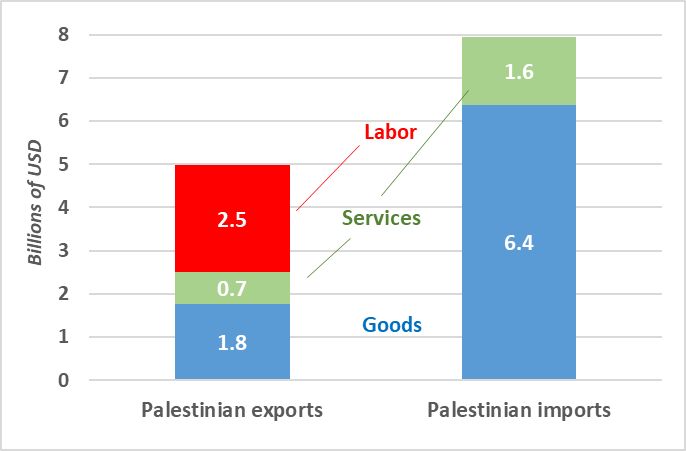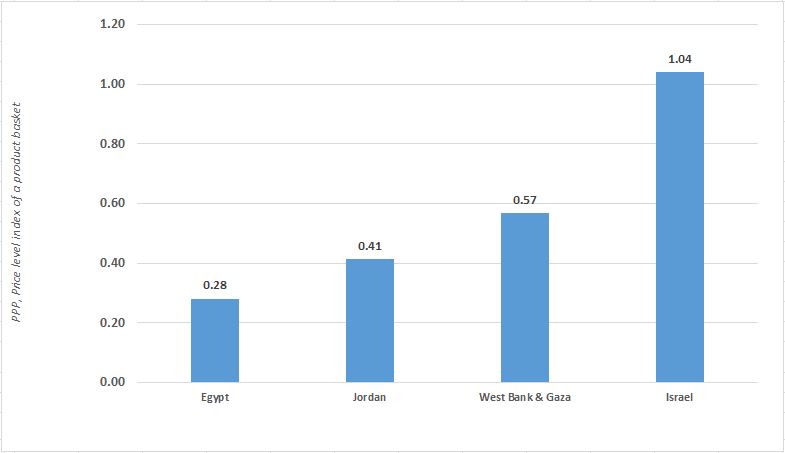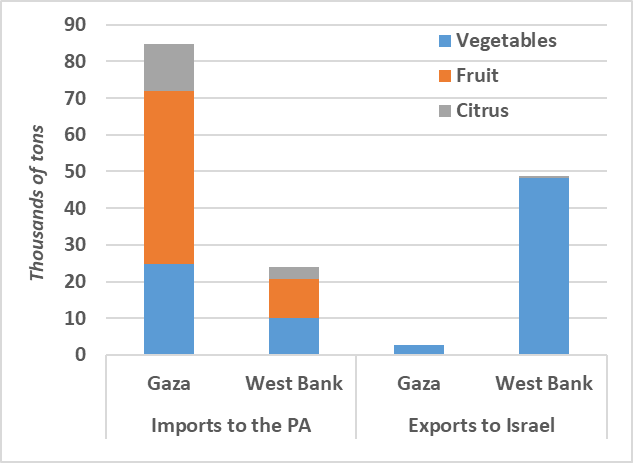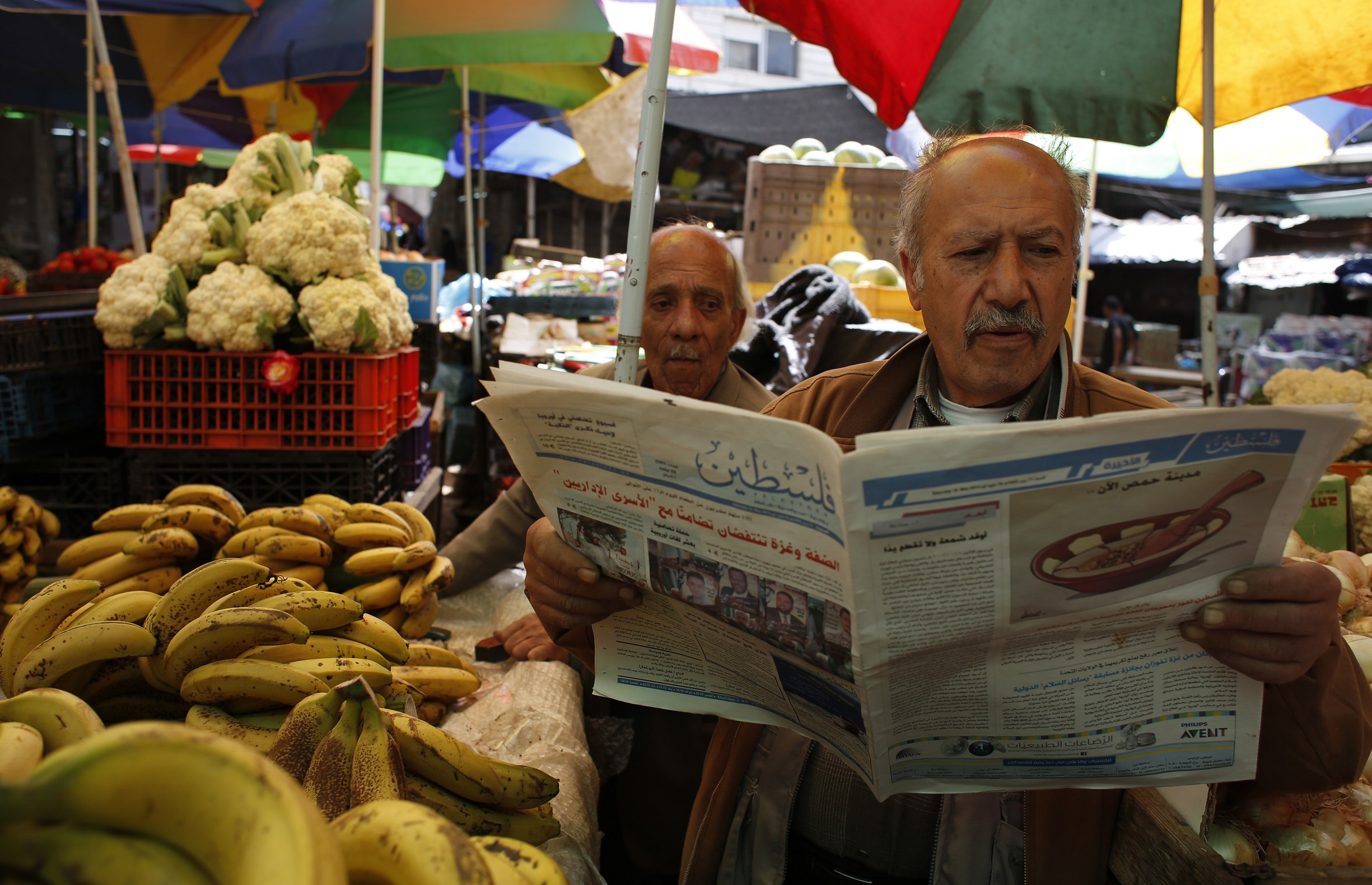Publications
INSS Insight No. 1525, October 12, 2021
The proposed reforms in importation of manufactured goods and agricultural produce are expected to affect the Palestinian economies in the West Bank and the Gaza Strip, which are part of the Israeli customs union. Increasing exposure to imports of goods and agricultural produce by easing import procedures and gradually reducing tariffs is expected to help Palestinian consumers by lowering product prices, and in particular, food products that are more important in the Palestinian consumer basket compared to the Israeli basket. On the other hand, the exposure could harm Palestinian producers and farmers, especially in the northern West Bank. However, policy measures – approval for Palestinian producers to market to the Israeli market under European standards and assistance in adjusting agriculture in the northern West Bank for the expected exposure – may help maximize the benefits of reforms for Palestinian economies and reduce the cost of living there, while containing damage.
Publicly, Israeli governments attach great importance to the economic situation of the Palestinians as related to political-security stability. However, the public debates on trade and agriculture reforms included in the Arrangements Law (attached to the budget bill) do not address their impact on the Palestinian economies. This article discusses the expected implications of these reforms for the structure of Palestinian foreign trade, the reform of imports, and the reform of agriculture.
Characteristics of Palestinian Foreign Trade
The Palestinian trade in goods is characterized by large scale imports (about $6.4 billion in 2020), with about 45 percent of reported imports from abroad. In contrast, Palestinian exports of goods are limited in volume (about $1.8 billion in 2019) and the vast majority are exported to Israel. Imports of services are also more than twice as large as exports of services. The large difference between imports and exports creates a trade deficit, which is partly covered by exports of labor services, mainly to Israel (Figure 1).

Figure 1: Palestinian Economies: Exports and imports of goods, services and labor (in billions of USD), 2020 | Source: Palestinian Monetary Authority
The Palestinian West Bank trade is covered by the Israeli customs union with adjustments defined in the Paris Agreement (1995), while the Gaza Strip also trades with Egypt and through it, regardless of the shared customs union. If so, a reduction in imports of agricultural goods and products as a result of easing regulation and the tariff rate on imports into the Israeli customs union is expected to reduce the current deficit in the balance of payments of the Palestinian economies – despite possible harm to limited Palestinian exports. Reductions in the prices of goods and agricultural products are also expected to benefit Palestinian consumers, especially in the West Bank, but at the same time may hurt Palestinian producers.
Import Reform
The import reform is expected to simplify import procedure and allow import of products into the Israeli-Palestinian customs union of products that meet European standards, regardless of the Israeli standard that has so far made it difficult to import products from abroad. The import reform has the potential to have a significant impact on the Palestinian economies that partially import at Israel's high price level. In fact, the price level according to the purchasing power parity (PPP) indices in the Palestinian economies is about 38 percent higher than the price level in Jordan, and twice the price level in Egypt, even though it is about half the price level in Israel (Figure 2). A closer look reveals that in 2020, consumer prices in the West Bank were on average 27 percent higher (not weighted) than prices in the Gaza Strip. Therefore, the potential for price reductions in the West Bank is greater compared to the potential for price reductions in the Gaza Strip.
Easing regulation of imports of products from abroad into the Israeli customs union is also expected to increase the rate of Palestinian imports from abroad, and to reduce imports of Israeli products. This trend is in line with periodic calls in the Palestinian Authority to prefer foreign products over Israeli products, whether in the context of the political conflict or in order to collect tariffs on imports for the Palestinian treasury. At this stage, before the final formulation of the reform, it is difficult to quantify the expected impact of the proposed reform on consumer prices or the composition of Palestinian imports.

Figure 2. The price level of a product basket in Israel, the Palestinian economies, Jordan, and Egypt, 2020 | Source: World Bank
The impact on Palestinian producers is expected to be mixed: on the one hand, import liberalization may harm some Palestinian producers due to competing imports into the Palestinian and the Israeli markets. On the other hand, should the reform allow Palestinian exporters exports to Israel under European standards as proposed for importers, they can diversify their export destinations to Israel and Europe without having to bear the costs of compliance to double Israeli and European standards. In addition, the reform on kosher certification may help Palestinian exports to Israel – if corporations give kosher certification to Palestinian producers – and the kosher food market opens up to Palestinian food producers, who have so far focused on peripheral markets.
Agricultural Reform
The agriculture reform includes a gradual reduction in customs duties on imports of agricultural produce, which will last about four years, in parallel with the compensation of Israeli farmers who will be hurt by imports from abroad. This reform is intended to lower prices for the Israeli consumer, whose food items make up about 18 percent of its consumption basket. This is also expected to benefit Palestinian consumers in the West Bank and the Gaza Strip, for whom the food items percentage in their consumption basket is greater (28 and 33 percent, respectively). The impact will be mainly on households in the urban sector and in the refugee camps, while many villagers – about a third of the Palestinian households in the West Bank and about a seventh of the households in the Gaza Strip – grow vegetables and fruits in private plots for self-consumption. Falling prices of agricultural produce may benefit not only households, which consumed about 38 percent of agricultural products in 2017 (including animal products), but also Palestinian industry, which used about 32 percent of agricultural products in the Palestinian market as a raw material for food production.
However, the reduction of customs duties on agricultural products will expose Palestinian farmers and agricultural workers to competition from abroad in both exports to Israel and the local market. Agriculture in the Gaza Strip in 2020 yielded about 12 percent of the low GDP of this territory, and employed about 13,000 workers, who constituted about 6.3 percent of Palestinians employed in the Strip. In contrast, agriculture in the West Bank in 2020 yielded about 6 percent of the territory’s GDP and employed about 40,000 workers, who constituted about 6.7 percent of those employed in the area. In addition, about 7,000 Palestinians from the West Bank were employed in the Israeli agriculture, and their employment could be harmed as a result of the reform.
An examination of the agricultural trade reported with Israel by region shows that Gaza is a significant importer of agricultural produce, but exports little produce to Israel (Figure 3). Therefore, reducing prices of vegetables and fruits in Israel is expected to lower prices of imports to Gaza and improve welfare in this area. However, the agricultural reform is expected to harm the economic feasibility of renewing agricultural exports to Israel from Gaza, which used to be a significant source of vegetables in the Israeli market before Hamas came to power.
On the other hand, the impact on the West Bank may be mixed: this region imports both vegetables and fruits from Israel, and exports almost exclusively vegetables to Israel (Figure 3). Most of the vegetables exported to Israel are grown in the Jenin, Tubas, and Jericho districts, and more than half of the vegetables exported to Israel in 2020 were cucumbers for industry. If so, lowering customs duties on imports of agricultural produce from abroad to Israel could compete with agricultural produce exported mainly from northern the West Bank, and harm Palestinian farmers.

Figure 3: Reported trade in Agricultural Produce between Israel and Palestinian Economies, in thousands of tons, 2016-19 (average) | Source: Israeli Ministry of Agriculture, annual reports, 2016, 2017, 2018, and 2019
Conclusion and Policy Recommendations
The Palestinian economies, which are part of the Israeli customs union, are expected to be affected by the reforms in the import of goods and agricultural produce included in the proposed Arrangements Law. These reforms are expected to reduce the commercial deficit of the Palestinian economies, increase the share of Palestinian imports from abroad at the expense of imports from Israel, and help lower prices in the Palestinian economy, especially in the West Bank, which is high compared to the region's economies.
However, Palestinian manufacturers may be harmed by these reforms. Therefore, it is advisable to examine, in coordination with the Palestinian Authority, policy measures that smooth the transition:
- Allow Palestinian manufacturers to export to Israel under European standards similar to the proposed regulation for imports from abroad. This measure could help them to diversify their export destinations to Europe at no extra cost resulting from compliance with double standards, Israeli and European
- Assist the rural economy in the northern West Bank, which is the main source for vegetable exports to Israel, to adjust to the exposure to imports of produce.
Other sections of the Arrangements Law may also affect Palestinian economies. Acceleration of construction industry activity is expected to increase Palestinian exports to the Israeli construction industry of workers and raw materials, which constitute about 13 percent of Palestinian exports of goods. A number of clauses are expected to affect illegal activity between the Israeli economy and the Palestinian economy in the West Bank: the allocation of invoice numbers by the tax authority may help reduce the illegal trade in invoices between Israelis and Palestinians. On the other hand, taxation of fuels and disposable utensils in Israel may create price differences, which will feed an Israeli-Palestinian black market similar to the black markets in fuels and tobacco, created due to excise gaps.
This analysis illustrates that the reforms in imports and in agriculture and other sections are likely to affect the Palestinian economies. Moreover, their activity in the customs union also affects the degree of application of the law in the Israeli economy itself. Therefore, it is worth examining in a structured way the implications of Israeli trade and tax reforms on the Palestinian economies and the interaction between them and the Israeli economy.
* The author thanks Tomer Fadlon and the editors of INSS Insight for the comments on the draft.



